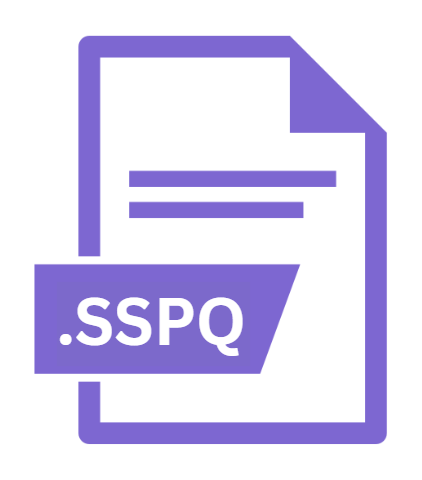.SSPQ File Extension

SSPQ Ransomware Encrypted File
| Developer | N/A |
| Popularity | |
| Category | Encoded Files |
| Format | .SSPQ |
| Cross Platform | Update Soon |
What is an SSPQ file?
Files bearing the .SSPQ extensions are indicative of a system compromised by the SSPQ ransomware.
Upon infection, this malicious software encrypts the victim’s files, rendering them inaccessible without the decryption key held by the attackers.
The presence of .SSPQ appended to filenames signifies that those files have been encrypted and are being held hostage until a ransom is paid.
More Information.
SSPQ ransomware first emerged as a threat in [INSERT DATE], unleashing its encryption capabilities upon unsuspecting victims worldwide.
Its initial purpose remains consistent with other ransomware variants: to encrypt valuable files and demand payment from victims in exchange for the decryption key.
The ransom demand often arrives with a strict deadline, adding urgency and pressure on victims to comply.
Origin Of This File.
The origin of the SSPQ ransomware can be traced back to the murky depths of the dark web, where cybercriminals ply their trade with impunity.
Like many ransomware strains, SSPQ likely originated from a criminal syndicate or an individual actor seeking financial gain through extortion.
Its propagation typically occurs through phishing emails, malicious downloads, or exploit kits, leveraging vulnerabilities in outdated software or operating systems.
File Structure Technical Specification.
The .SSPQ file extension denotes files that have undergone encryption using the SSPQ ransomware algorithm.
While specific technical details regarding the encryption method employed by SSPQ remain clandestine to prevent decryption attempts, ransomware typically utilizes robust encryption algorithms such as AES or RSA.
These algorithms generate unique encryption keys, making decryption without the corresponding key virtually impossible.
How to Convert the File?
Converting files encrypted with the “.SSPQ” extension involves decrypting them using the appropriate decryption key.
Decrypting files encrypted by SSPQ Ransomware can be challenging, as it requires specialized knowledge and tools. Here are some steps to attempt file conversion:
- Identify SSPQ Ransomware Variant: Determine the specific variant of SSPQ Ransomware that encrypted the files. This information can help in finding decryption tools or solutions tailored to that variant.
- Research Decryption Solutions: Search online for decryption tools or solutions developed by cybersecurity researchers, antivirus companies, or law enforcement agencies. These tools may be able to decrypt files encrypted by certain variants of SSPQ Ransomware.
- Backup Encrypted Files: Before attempting any decryption process, it’s crucial to back up the encrypted files. This ensures that even if the decryption attempt fails or causes further damage, the original encrypted files are preserved.
- Use Decryption Tools: If decryption tools are available, carefully follow the instructions provided by the tool’s developers. This may involve downloading and running the decryption tool on a clean system or following specific decryption procedures.
- Consult Cybersecurity Experts: If decryption tools are not readily available or if the decryption process proves unsuccessful, consider seeking assistance from cybersecurity experts or professional ransomware recovery services. These experts may have additional insights or techniques for decrypting SSPQ-encrypted files.
- Exercise Caution with Ransom Payments: While some victims may consider paying the ransom to obtain the decryption key, it’s essential to exercise caution. There’s no guarantee that paying the ransom will result in the successful decryption of files, and it may further incentivize criminal activity.
- Report Incidents to Authorities: In cases of ransomware attacks, consider reporting the incident to law enforcement agencies or cybersecurity authorities. Reporting incidents can help in tracking down and apprehending cybercriminals, as well as gathering intelligence to prevent future attacks.
Advantages And Disadvantages.
Advantages:
- Strong Encryption: SSPQ ransomware employs sophisticated encryption algorithms, making it challenging for victims to decrypt files without the ransom key.
- Financial Incentive: For cybercriminals, SSPQ presents an opportunity for financial gain through ransom payments, incentivizing further development and distribution of the malware.
- Anonymity: Cryptocurrency payments demanded as ransom facilitate anonymity for perpetrators, making it difficult for law enforcement agencies to track and apprehend them.
Disadvantages:
- Data Loss: Victims of SSPQ ransomware face the risk of permanent data loss if they refuse to pay the ransom or are unable to recover files through alternative means.
- Reputation Damage: Organizations affected by ransomware attacks may suffer reputational damage, eroding trust among customers, partners, and stakeholders.
- Legal Ramifications: Payment of ransom may violate regulatory compliance standards and attract legal repercussions, further complicating the aftermath of an attack.
How to Open SSPQ?
Open In Windows
- On Windows operating systems, decrypted files can be opened using native applications such as File Explorer, Microsoft Office Suite, Adobe Acrobat Reader, or multimedia players for audio and video files.
Open In Linux
- Linux users can access decrypted files using file managers like Nautilus or Dolphin, as well as open-source applications compatible with the respective file formats, such as LibreOffice for documents and VLC media player for multimedia files.
Open In MAC
- Decrypted files on MacOS can be opened using applications like Finder, Preview for documents and images, QuickTime Player for videos, and iTunes for audio files.













